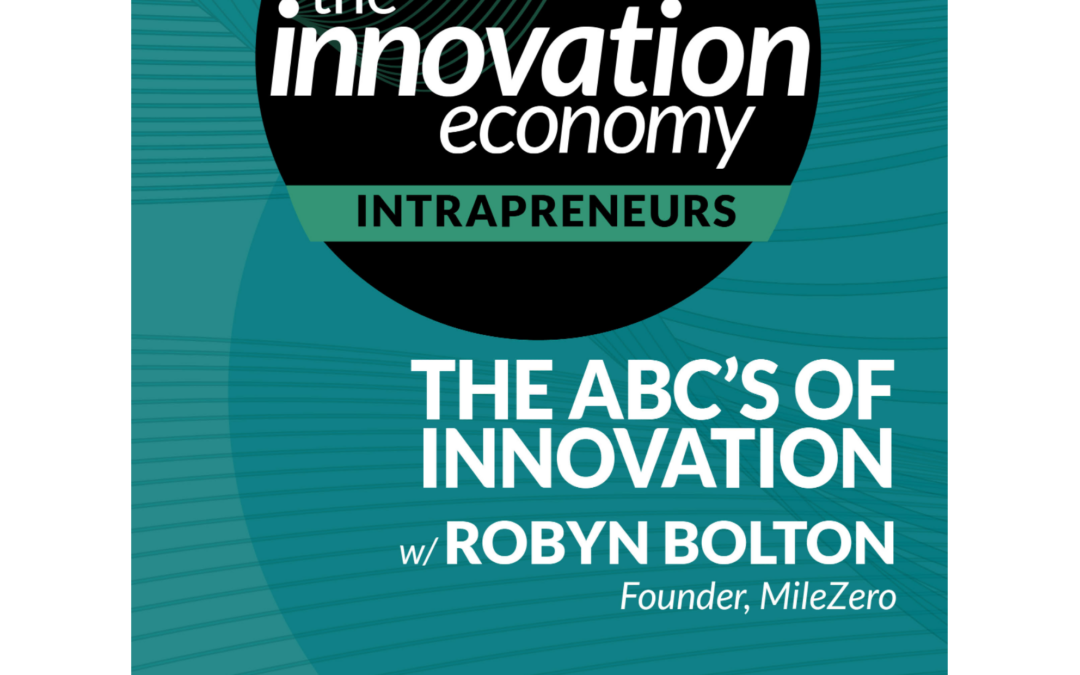
by Robyn Bolton | Apr 21, 2024 | Innovation, Leadership, Tips, Tricks, & Tools
You are a natural-born problem solver. From the moment you were born, you’ve solved problems. Hungry? Start crying. Learning to walk? Stand up, take a step, fall over, repeat. Want to grow your business? Fall in love with a problem, then solve it more delightfully than anyone else.
Did you notice the slight shift in how you solve problems?
Initially, you solved problems on your own. As communication became easier, you started working with others. Now, you instinctively collaborate to solve complex problems, assembling teams to tackle challenges together.
But research indicates your instincts are wrong. In fact, while collaboration can be beneficial for gathering information, it hinders the process of developing innovative solutions. This counterintuitive finding has significant implications for how teams approach problem-solving.
What a Terrorism Study Reveals About Your Team
In a 2015 study, researchers used a simulation developed by the U.S. Department of Defense to examine how collaboration impacts the problem-solving process. 417 undergrads were randomly assigned to 16-person teams with varying levels of “interconnectedness” (clarity in their team structure and information-sharing permissions) and asked to solve aspects of an imaginary terrorist attack scenario, such as identifying the perpetrators and target. Teams had 25 minutes to tackle the problem, with monetary incentives for solving it quickly.
Highly interconnected teams “gathered 5 percent more information than the least-clustered groups because clustering prevented network members from unknowingly conducting duplicative searches. ‘By being in a cluster, individuals tended to contribute more to the collective exploration through information space—not from more search but rather by being more coordinated in their search,’”
The Least Interconnected teams developed 17.5% more theories and solutions and were more likely to develop the correct solution because they were less likely to “copy an incorrect theory from a neighbor.”
How You Can Help Your Team Create More Successful Solutions
You and your team rarely face problems as dire as terrorist attacks, but you can use these results to adapt your problem-solving practices and improve results.
- Work together to gather and share information. This goes beyond emailing around research reports, interview summaries, and meeting notes. “Working together” requires your team to take action, like conducting interviews or writing surveys, with one another in real-time (not asynchronously through email, text, or “collaboration” platforms).
- Start solving the problem alone. For example, at the start of every ideation session, I ask people to spend 5 minutes privately jotting down their ideas before group brainstorming. This prevents copying others’ theories and ensures all voices are heard. (not just the loudest or most senior)
- Invite the “Unusual Suspects” into the process. Most executives know that diversity amplifies creativity, so they invite a mix of genders, ages, races, ethnicities, tenures, and industry experiences to brainstorming sessions. While that’s great, it also results in the same people being invited to every brainstorm and, ultimately, creating a highly interconnected group. So, mix it up even more. Invite people never before invited to brainstorming into the process. Instead of spending a day brainstorming, break it up into one-hour bursts at different times of the day.
Are You Willing to Take the Risk?
For most of your working life, collaboration has been the default approach to problem-solving. However, this research suggests that rethinking when and how to leverage collaboration can lead to greater success.
Making such a change isn’t easy – it invites skepticism and judgment as it deviates from the proven “status quo” process.
Are you willing to take that risk, separating information gathering from solution development, for the potential of achieving better, more innovative outcomes? Or will you remain content with “good enough” solutions from conventional methods?

by Robyn Bolton | Apr 16, 2024 | Podcasts

by Robyn Bolton | Apr 8, 2024 | Podcasts

by Robyn Bolton | Mar 19, 2024 | Innovation
Growth is the lifeblood of any organization, and the quest for growth opportunities is not just a strategic imperative. It is a fundamental necessity because the ability to identify and capitalize on opportunities is a game-changer for companies wanting to achieve sustainable success and stay ahead of the competition.
The challenge, however, is that not all opportunities are the same – some are head-smackingly obvious, while others are like trying to nail down JELL-O. Yet companies take a “one size fits all” approach to finding, developing, and capitalizing on them.
SEARCH when need to transform
What do you do when you need information but don’t know precisely what you need and certainly don’t know where to find it? You Google it or, in less-branded terms, you search for it.
When searching for growth opportunities, you’re looking for something but don’t know exactly what you need or where you’ll find it. Finding opportunities requires you to go beyond traditional market analysis and adopt a learner’s mindset to see ways to disrupt the status quo, challenge existing paradigms, and create new value propositions for your customers.
Searching is a creative process that entails investing in R&D, fostering a culture of intrapreneurship, and experimenting with new technologies. It requires a culture of creativity, experimentation, and agility to adapt to changing market dynamics. You have to be willing to be wrong on your way to being right, to move slowly so you can act quickly, and to throw out the timeline to harness the game-changing opportunity.
SEEK when you need to innovate
What do you do when you know what you need and generally where to find it? You seek it out – you go to where you think it will be, and, on the off-chance it’s not there, you pivot to Option B.
When you’re seeking growth opportunities, you have a target in mind but are not 100% sure how to hit it. Maybe you know you want to enter a new geography, but you need to figure out how to do it successfully and avoid the mistakes of previous entrants. Maybe it’s a new industry or category, but you must understand if and how to do it without disrupting your existing business model.
Seeking is both creative and analytical. You look for data and market intelligence, interview experts and individuals, analyze industry trends and explore untapped segments. It also requires you to stay open to surprises and new possibilities and take calculated risks to capitalize on emerging trends or consumer preferences. Like searching, it requires patience. Unlike searching, it respects a deadline.
STALK when you need to improve
Just like a lioness stalking a wildebeest, you do this when you see an opportunity and know exactly how to capture it. Yes, there will be zigs and zags along the way, and an unexpected competitor may pop up. But this is who you are and what you do.
When stalking opportunities, you bring the full value and power of your experience, expertise, resources, and capabilities to bear on an opportunity. This may happen when you’re operating and improving your core business. It may also occur after you’ve searched (and found) an opportunity, sought (and decided on) a strategy, and now you have the confidence to launch and scale.
Do Your Approaches Align with Your Goals?
Most companies say that they want to transform. Still, very few have the patience or intestinal fortitude to search because there is no Google for Transformation that produces the exact plan you need to transform successfully.
Companies also tend to stalk when they want to innovate, leaving opportunities to change the game and build sustainable competitive advantage on the sideline because they’re too uncertain or take too long.
Growth requires all three approaches – search, seek, and stalk – but only happens when your chosen approach aligns with your goals.

by Robyn Bolton | Mar 11, 2024 | Innovation, Leadership
In 2014, rumors started to circulate that Apple was developing a self-driving autonomous car to compete with Tesla. At the end of February 2024, rumors circulated that Apple was shutting down “Project Titan,” its car program. According to multiple media outlets, the only logical conclusion from the project’s death is that this decision signals the beginning of the end of Apple.
As much as I enjoy hyperbole and unnecessary drama, the truth is far more mundane.
The decision was just another day in the life of an innovation.
As always, there is a silver lining to this car-shaped cloud: the lessons we can learn from Apple’s efforts.
Lesson 1: Innovation isn’t all rainbows and unicorns
People think innovation is fun. It is. It is also gut-wrenching, frustrating, and infuriating. Doing something new requires taking risks, which is uncomfortable for most people. Even more challenging is that, more often than not, when you take a risk, you “fail.” (if you learned something, you didn’t fail, but that’s another article).
What you can do: Focus on the good stuff – moments of discovery, adventures when experimenting, signs that you’re making life better for others – but don’t forget that you’re defying the odds.
Lesson 2: More does not mean success
It’s been reported that Apple spent over ten billion dollars on Project Titan and that over 2000 people were working on it before it was canceled. With a market cap of over two trillion dollars, a billion dollars a year isn’t even a rounding error. But it’s still an eye-popping number, which makes Apple’s decision to cut its losses downright courageous.
What you can do: Be on guard for the sunk-cost fallacy. It’s easy to believe that you’ll eventually succeed if you keep working and pouring resources into a project. That’s not true, as Apple experienced. And in the rare cases when it is, executives are often left wondering if the success was worth the cost.
Lesson 3: Pivot based on data, not opinions
At least four different executives led Project Titan during its decade in development, and each leader brought their own vision for what the Apple Car should be. First, it was an electric vehicle with driver assistance that would compete with Tesla. Next, it was a self-driving car to compete with Google’s WayMo. Then, plans for fully autonomous driving were canceled. Finally, the team returned to its original target of matching Tesla’s Level 2 automation.
Changes in project objectives, strategies, and execution plans are necessary for innovation, so there’s nothing obviously wrong with these pivots. But the fact that they tended to happen when a new leader was appointed (and that Jony Ive caused an 18-month hiring freeze simply by expressing “displeasure”) makes me question how data-based these pivots actually were
What you can do: Be willing to change but have a high standard for what is required to cause a change. Data, even qualitative and anecdotal data, should be seriously considered. The opinion of a single executive, not so much.
Lesson 4: Dream big, build small
Apple certainly dreamed big with its aspirations to build a fully semi-autonomous vehicle and it poured billions into developing and testing the sensors, batteries, and partnership required to make it a reality. But it was never all-or-nothing in its pursuit of the automotive industry. Apple introduced CarPlay the same year it kicked off Project Titan, and it continues to offer regular updates to the system. Car Key was announced in 2020 and is now offered by BMW, Genesis, Hyundai, and Kia.
What you can do: Take a portfolio approach towards your overall innovation portfolio (Apple kept working on the iPhone, iPad, Apple Watch, and Vision Pro) and within each project. It’s not unusual that a part of the project turns out to be more valuable than the whole project.
Lesson 5: ___________________________
Yes, that is a fill-in-the-blank because I want to hear from you. What lesson are you taking away from Project Titan’s demise, and how will it make you a better innovator?




